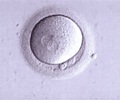The influenza A H1N1 viral pandemic of 2009 or as commonly called Swine flu was one of the major pandemics after the Hong Kong Flu of 1968. It was officially declared by the Center for Disease Control (CDC) and WHO as a pandemic in June 2009 and was declared to be over by August 2010. However, in June 2011, an alert was reissued by WHO to the American nations.
Unlike the other Influenza viruses, the H1N1 virus has the characteristic of affecting people in all age groups. As per sources, 25% of the cases required ICU admissions while the death rate was close to 7%.An early detection and screening of the condition can save the damage caused and prevent disease severity. H1N1 influenza diagnosis is considered a bit tricky and difficult compared to other cases and types of Influenza. This is also attributed to the nature and presentation of the signs and symptoms of the disease.
The common signs and symptoms of the H1N1 viral flu include fever (above 100F), cold or runny nose, cough or headaches usually accompanied by fatigue, nausea and vomiting. Chest X-rays and nasopharyngeal swabs are commonly used for detection of the H1N1 virus pneumonia but often fail to detect the early interstitial stage of the condition.
A chest CT scan considered the gold standard for the diagnosis of the early interstitial stage of the influenza is not commonly used due to its cost, radiation exposure as well as unavailability in an emergency set-up.
This difficulty in diagnosis had lead Dr. Americo Testa and his team from Italy to explore the effectiveness of Chest Ultrasound as a diagnostic tool. The research was conducted on 98 patients who were screened for community-acquired pneumonia together with other co-morbidities.
Chest X-rays, laboratory tests, Chest CT scan were conducted on patients for making a definitive diagnosis for H1N1 influenza or pneumonia. This included 34 patients with an established diagnosis of pneumonia, 16 with normal Chest X-ray findings and 33 patients as controls.
32 out of the 34 patients with an established pneumonia diagnosis were found to have an abnormal lung pattern on the Chest Ultrasound.
An ultrasound pattern of Alveolar consolidation was found in only 4 of the patients initially diagnosed with an abnormal chest X-ray and pneumonia.
Out of the 33 controls, again 5 were detected with an abnormal interstitial pattern in the ultrasounds.
The researchers thus recommended the Chest Ultrasound as an effective tool in the early detection of H1N1 pneumonia especially in an emergency set-up.
Source-Medindia














